If you process acorns, and make your own acorn flour, you have to try acorn flour crepes. They're easy to make, and you can serve them sweet or savory.
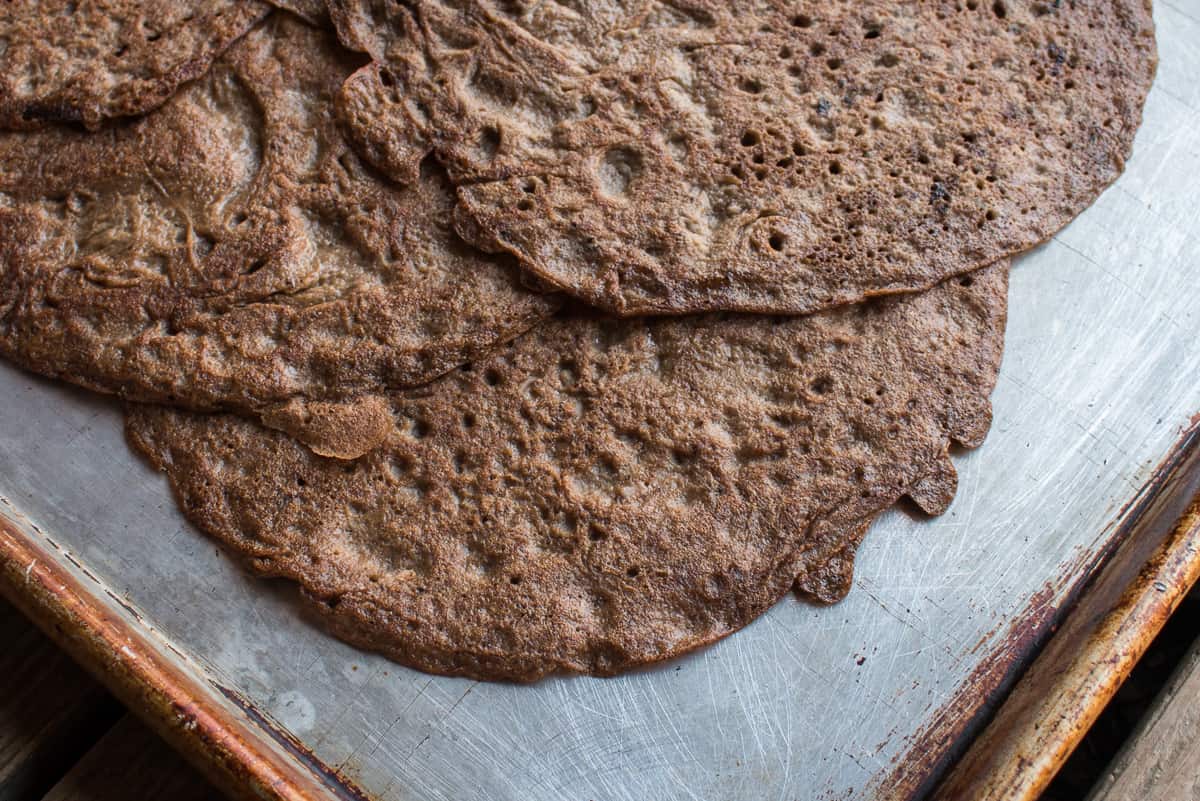
I love the taste of acorns, but I don't use much of it at one time, since acorn flour is heavy, dense stuff, almost like nut meal, but more starchy and dense. I typically use it in a blend for most recipes.
Crepes are great all-around, but they're really well suited for acorn flour for a number of reasons. First, crepes contain a good amount of egg, so gluten is really a non-issue--you can make a crepe out of just about any flour.
Even so, acorn flour, even bolstered by egg, will still make more delicate and brittle crepes than other flours (buckwheat, for example) so I like to cut it 50-50 with another flour to strengthen it and give a more durable crepe. Secondly, flavor. Acorn flour has a good, potent flavor, and cutting it in half won't diminish it too much.
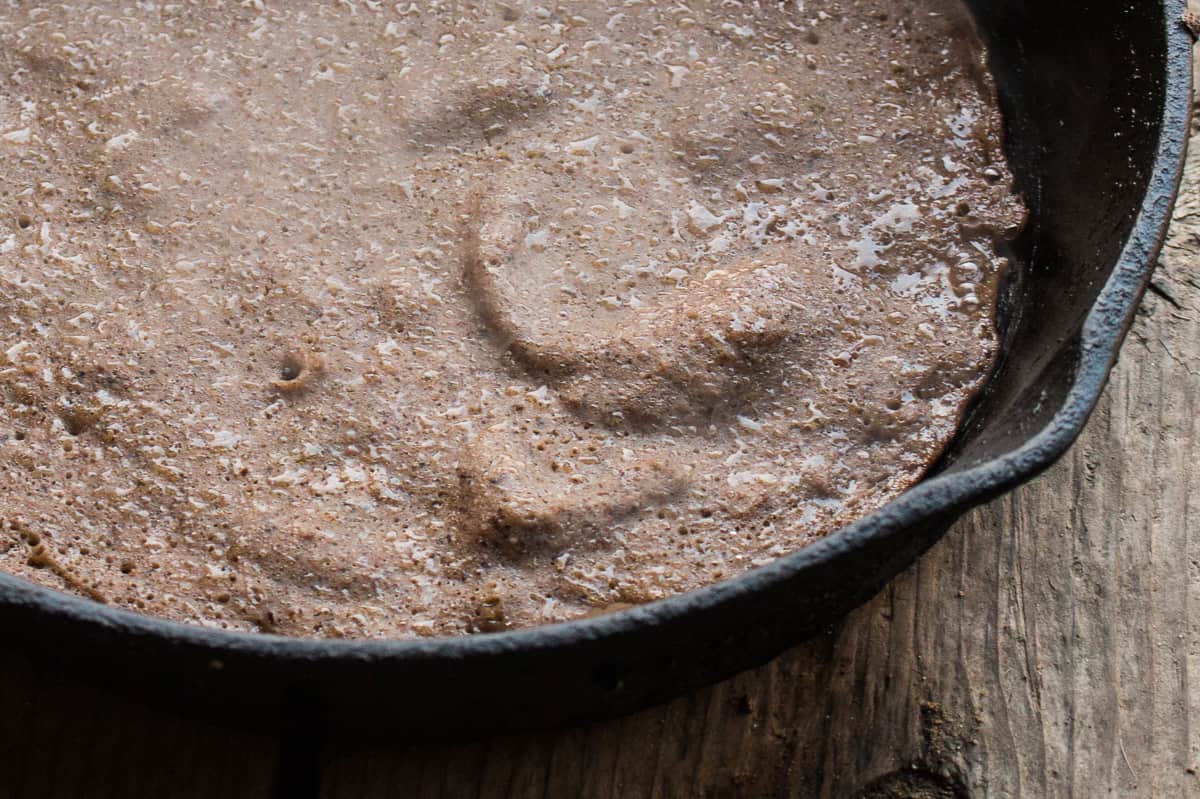
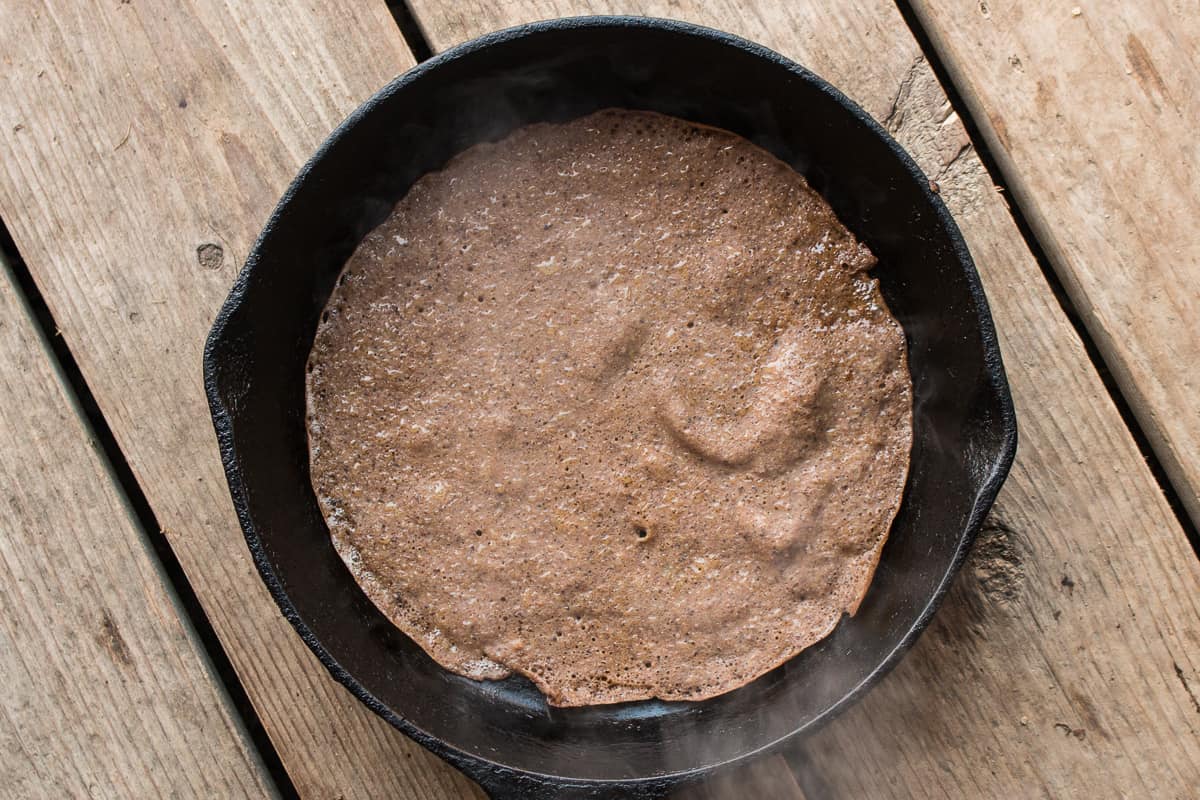
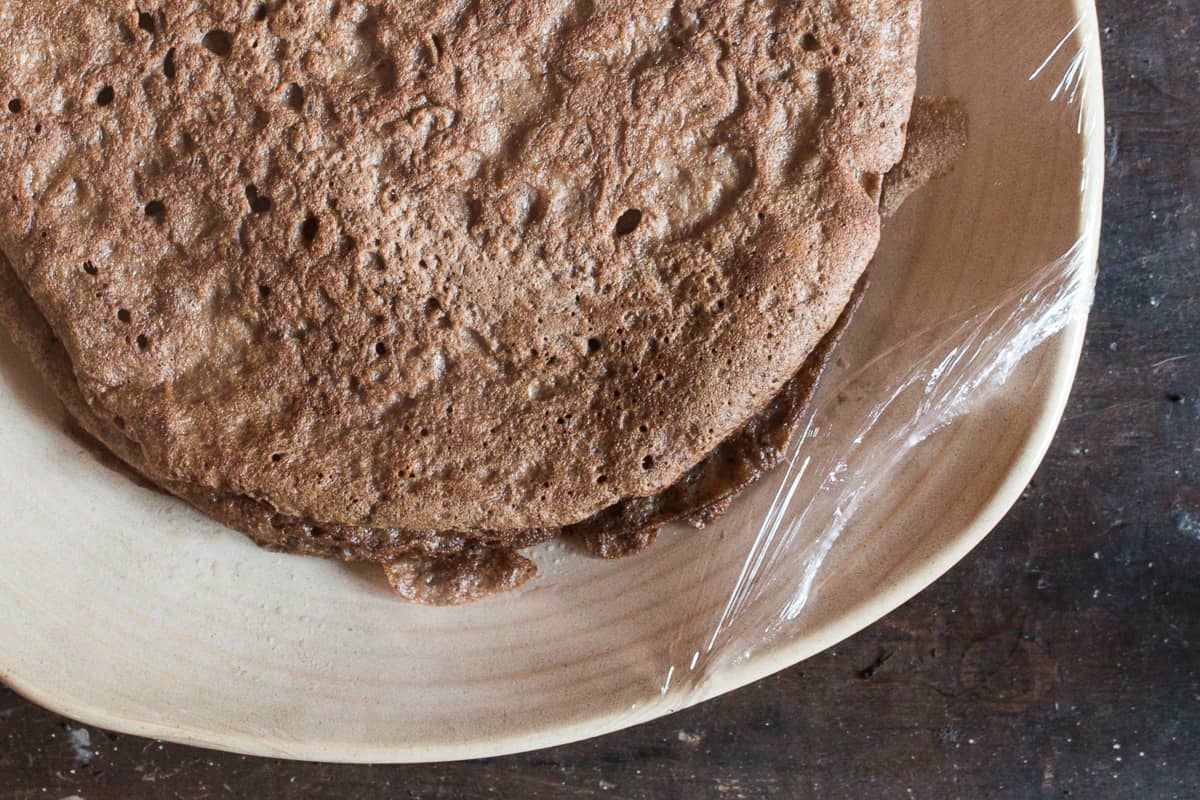
Lastly, as I mentioned, acorn flour is dense, heavy stuff. After eating something made with it, you're going to feel it. Since crepes are nice and light, they're a great way to use some acorn flour and not have to take a nap afterwords.
They're also thrifty, just ½ cup of acorn flour will make 6 crepes--plenty for a couple people to have their fill. That being said, since they're nice and light, after you spread one with butter and jam, piping-hot out of a skillet, you may reconsider sharing them. Oh, and if you aren't familiar with how to make acorn flour/meal, I outline the cold-leaching process here.
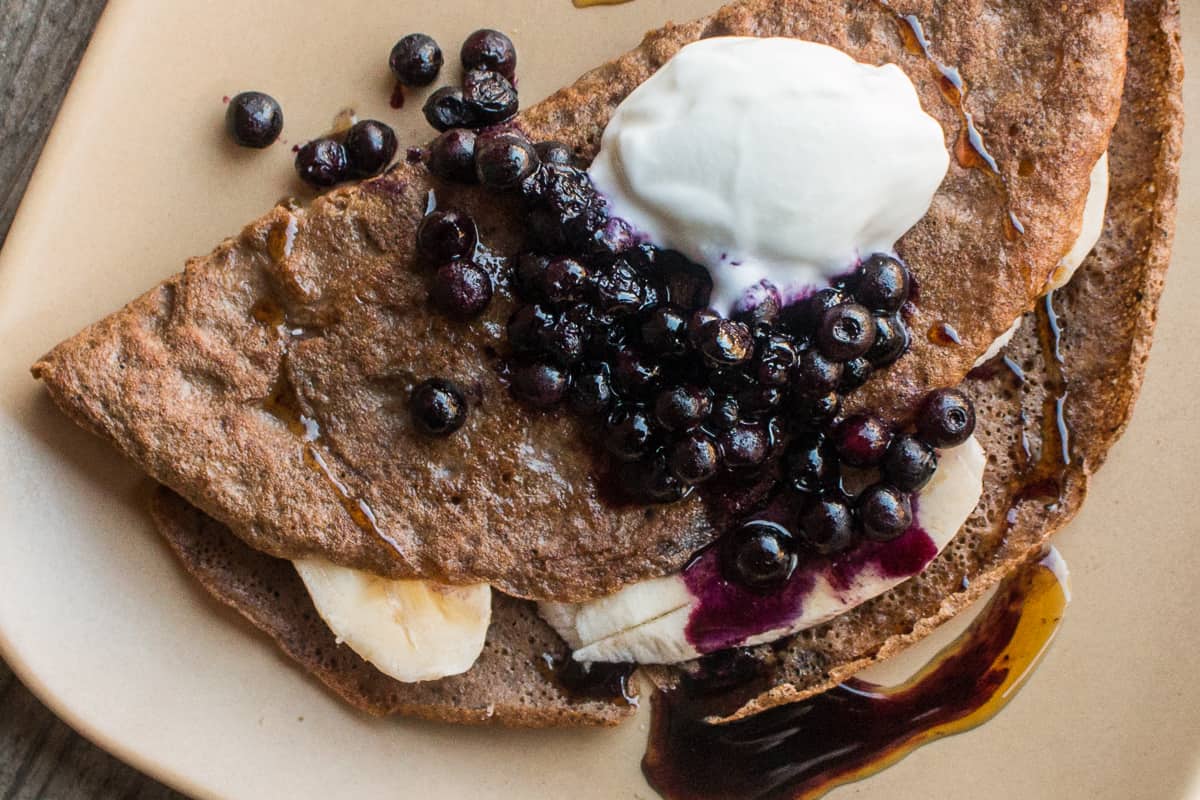
I outline a few restaurant tricks in the recipe below, but just to hammer it home, here's the big points
Chef's Crepe Tips
- Use a nonstick pan--no compromise here.
- Allow the crepes to steam covered with cling film or something to hold in moisture to ensure tender, pliable crepes.
- Cook the crepes on one side only to avoid them becoming crisp and brittle.
- Allow the crepe batter to rest, preferably overnight--especially important with acorns, since soaking helps the nut meal to hydrate and soften, if you cook with the batter right away the crepes will be more brittle.
- Master swirling the pan to distribute the batter evenly--this will take a few tries
- The first acorn crepe you eat should be butter, and maple syrup only, before you get too creative
Serving
Crepes are super versatile, and one of the few things that are good for any meal of the day--sweet or savory. Here's a few ways you might try them:
Sweet
- Filled with sliced bananas, a dollop of yogurt, maple syrup and hot blueberries
- Filled with jam and cream cheese, and rolled up
- Folded in half twice, and drizzled with butter, maple syrup and crushed, toasted nuts
- To really taste the acorn, fold them up and serve with nothing more than butter and maple syrup
Savory
- Filled with scrambled eggs and chopped peppery greens like arugula or watercress
- Use like injera: tear the warm crepe and use it as a utensil to scoop up curries, etc
- Filled with chopped, cooked greens and some grated melty cheese like gruyere
- Filled with greens, a dollop of ricotta, egg, and a pinch of nutmeg and baked like canneloni
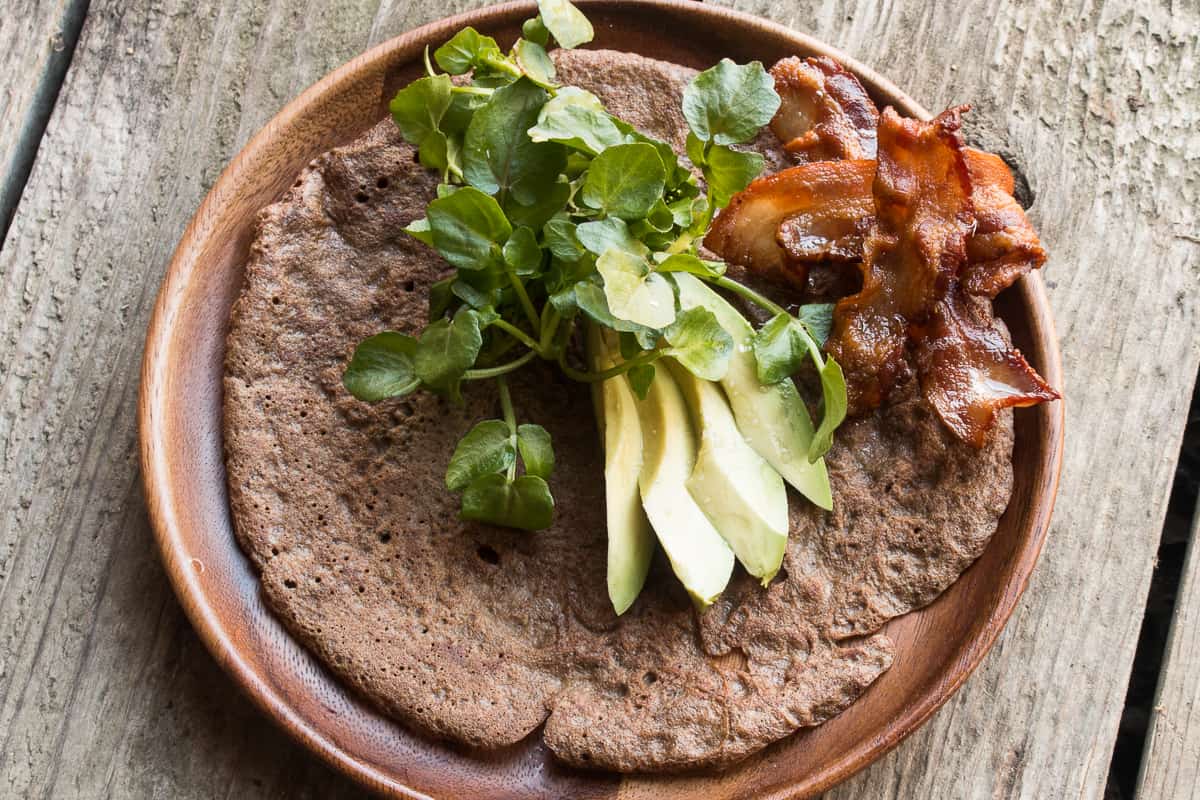
Acorn Flour Crepes
Equipment
- 8 inch non-stick pan
Ingredients
- ½ cup all purpose flour or equivalent
- ½ cup cold leached acorn flour
- ½ teaspoon kosher salt
- 1 teaspoon sugar for sweet crepes (optional)
- 2 tablespoons melted unsalted butter or other fat
- 1 cup plus 2 tablespoons milk or water
- 2 large eggs
- Oil as needed for cooking—a tablespoon or two (see note)
Instructions
- Make sure the acorn flour is very fine—I like to sift it, then grind again. Combine all ingredients except the acorn flour in a blender and puree until smooth, then add the acorn flour and continue blending. Transfer to a container and allow to rest overnight, or at least for an hour or two.
- To cook the crepes, lightly grease or spray an 8 inch non-stick pan, and get it hot—very hot. When the pan is smoking lightly, try making your first crepe by drizzling in a generous ¼ cup of batter, swirling the pan so it reaches out to the edges—if it doesn’t look great, don’t worry—you’re going to have some time to perfect your technique,
- The first crepe is often scrap since even though the pan is hot, t’s not hot enough to really get going. Typically by crepe 2 or 3, you’ll be in business.
- Cook the crepes on one side only, transferring them to a plate with a spatula gently as they finish cooking, stacking the crepes on top of each other. When all the crepes are done, cover the plate or platter with cling film so they steam and remain soft and pliable, which is the secret to tender, flexible crepes. Alternately, eat the crepes straight away, with your choice of garnishes.

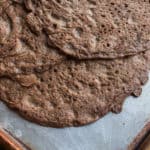
Val Rossman
OMG. These were my first recipe with my first batch of acorn flour. Did not disappoint! I did the over night rest on the batter. Loved that it let the flavor profile of the acorn shine through the delicate texture. No issues cooking perfect crepes, but not my first rodeo with them. Seems to be a mast year for acorns around here. I can see I am going to be gathering all that time will allow. I am sold on them even though the leaching process is a bit laborious. Recipe is a keeper!